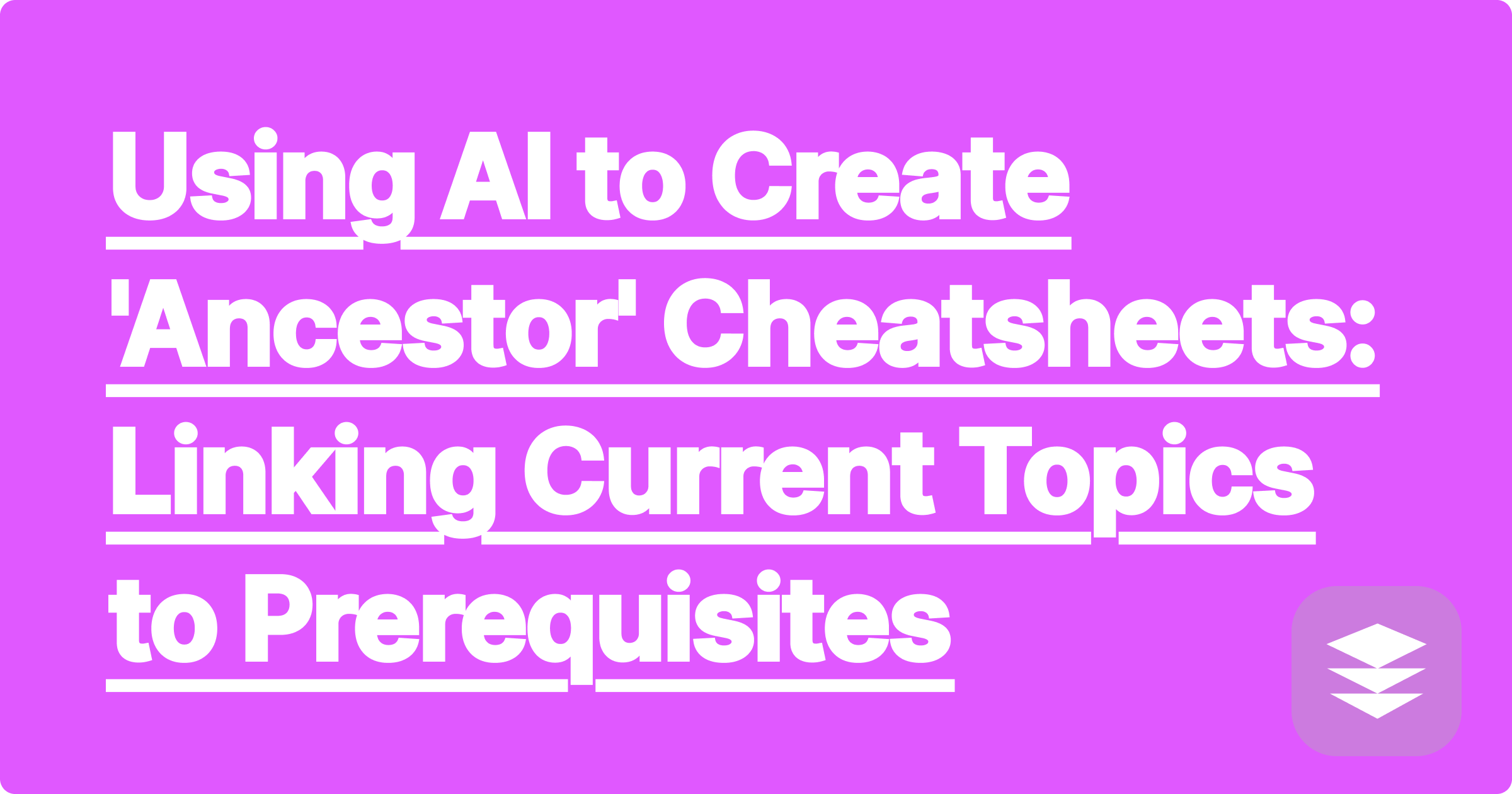
Why is a course like Differential Equations so hard? It's often not because the new concepts (like finding a particular solution) are so difficult on their own. It's because the course assumes you have perfect recall of all the prerequisite knowledge from Calculus I, Calculus II, and Linear Algebra. If your foundation in integration techniques or matrix algebra is shaky, the entire structure of your new knowledge will be unstable. You're trying to build a skyscraper on a leaky foundation.
The human brain learns best by connecting concepts. True understanding comes when you can see how a new idea is just a novel combination of ideas you already know. But your notes are siloed. Your Calculus notes are in one folder, your Linear Algebra notes are in another. Manually creating a "prerequisite knowledge map" for every new topic is an impossibly time-consuming task.
This is where an AI knowledge base like GPAI Cheatsheet reveals its true power. Because it has access to all of your past course notes, it can perform prerequisite knowledge mapping automatically.
The Workflow:
[Image: A mind map graphic. In the center is a block labeled "Differential Equations." Arrows point to it from "ancestor" blocks labeled "Integration by Parts (Calc II)," "Eigenvalues (Lin Alg)," and "Partial Fractions (Calc I)". Alt-text: A prerequisite knowledge map showing how AI can connect concepts in math.]
The AI's output will be a uniquely powerful study guide:
You no longer have to dig through old folders. The AI brings the necessary foundation directly to you, right when you need it. If you need a more detailed refresher, you can ask the GPAI Solver to walk you through a prerequisite problem.
This method of creating "ancestor cheatsheets" aligns perfectly with how our brains learn. It strengthens neural pathways by explicitly connecting new information to existing knowledge. It instantly patches any "leaks" in your foundational understanding, ensuring that you're always building on solid ground.
A: The AI has been trained on the structure of mathematical and scientific knowledge. It understands that 'derivatives' are a prerequisite for 'differential equations' in the same way it understands that a 'foundation' is a prerequisite for a 'house'. By analyzing the content of your notes, it can map these dependencies automatically.
A: Absolutely. In computer science, you can link a new data structure to the more basic ones it's built from. In organic chemistry, you can link a complex reaction mechanism back to the fundamental principles of electrophiles and nucleophiles.
Stop feeling like you're always a step behind. Start building your knowledge with a solid, interconnected foundation. By using an AI to automatically link new topics to their prerequisites, you can learn faster, reduce frustration, and build a deep, resilient understanding that lasts.
[Build a stronger foundation for your learning. Use GPAI Cheatsheet to connect new ideas to what you already know. Sign up for 100 free credits.]
How to Finally Organize Your Chaotic Google Drive / Dropbox with AI
The Sunk Cost Fallacy of Your Old Study Habits: Why It's Time to Switch to AI
How an AI Notetaker Can Help Students with ADHD Focus
The 'Weekend Warrior' Study Plan: How to Master a Week's Content in 5 Hours
Could you explain that with a sports analogy?': Asking AI for Personalized Metaphors
The Quantified Student: Using AI to Track Your Study Metrics and Find Your Peak Time
How to Reverse-Engineer an 'A+' Paper with an AI Assistant
The 'Empty Your Brain' Technique: Using an AI Notetaker Before Bed for Better Sleep
Using AI to Create 'Ancestor' Cheatsheets: Linking Current Topics to Prerequisites
What's Next for GPAI? A Sneak Peek into Our Vision for the Future of Learning